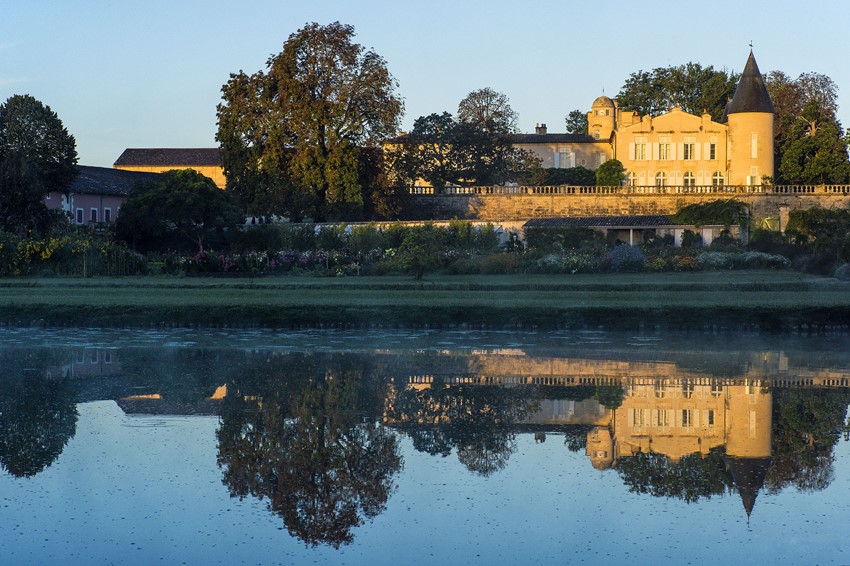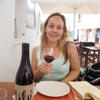Meet the Château… Lafite Rothschild
In the first edition of our new ‘Meet the Château’ series, we visit one of the latest additions to our ground-breaking Bordeaux Collection, Lafite Rothschild. Needing no introduction, Lafite is an iconic first growth within the 1855 classification. It has been in the Rothschild family since 1868, and today is owned by the inimitable Domaines Barons de Rothschild.
Pauillac
Located in the AOC of Pauillac, on the northern Left Bank of Bordeaux, Lafite is one of three First Growths in this commune. Quoting Jane Anson’s summary of Pauillac in her masterful ‘Inside Bordeaux’ book: “Pauillac wines are deeply coloured, powerful, well-structured. You can feel those tannins pulsating in the glass in the very best years, mainly because Cabernet Sauvignon is dominant in most of the top wines. This means that they last, perhaps the longest of all Bordeaux wines, developing an extremely complex and aromatic palate as they age.”

The place
Steeped in history and the epitome of what classified Bordeaux is all about, the first known reference to Lafite Rothschild dates to 1234. Today, Lafite is headed up by Saskia de Rothschild, daughter of long-time steward Baron Eric de Rothschild.
Jane Anson notes: “There are powerful names in wine, and then there’s Lafite. And somehow it has always been that way. So, what makes Lafite so special? Well, there’s the gravel, gravel, and more gravel – up to ten meters deep in some places – with pockets of aeolian black sand and a bedrock of limestone.”
The vineyard consists of three main areas: the hillsides around the Château, the adjacent Carruades plateau to the west, and 4.5ha in neighbouring Saint Estèphe. The vineyard covers 112ha and is well-drained and well-exposed. Primarily planted to Cabernet Sauvignon (70%) as expected, the rest of the plantings consist of Merlot (25%), Cabernet Franc (3%) and Petit Verdot (2%).
The average age of the grapevines is 39 years old, although vines younger than 10 years old are not used in the Grand Vin, meaning that the average age of the vines used in the Château Lafite Rothschild is closer to 45 years. The oldest plot, called “La Gravière”, was planted in 1886. All vineyards are now conducted organically and even 15ha are under biodynamic farming. The young and talented technical team at the Château makes Lafite one of the most precision-focused teams from a viticultural standpoint.

The winemaking
The grapes from each plot are fermented in separate vats, in order to preserve the identity of each terroir. Tradition and technical progress go hand in hand, and fermentation takes place in two vat rooms: one with traditional large oak vats, and the other with modern stainless-steel vats, with integrated cooling/heating rings and automated centralized temperature control.
Upon completion of alcoholic fermentation, the cuvée-wines are tasted before being drawn off to the fine wine vats. The free run juice and the pomace are separated, and the pomace is pressed independently in order to extract the press wine. Malolactic fermentation takes place in vats before the wine is transferred into barrels by batches.
In 2010, Lafite constructed two vat rooms consisting of several dozen smaller-sized vats, with individual vat rooms specifically and individually suited to Merlot and Cabernet Sauvignon. All of the barrels come from the Domaine’s cooperage, with a special toasting during manufacturing suited to the characteristics of the wine. Several tastings from each vat are carried out to make the selection for the Grand Vin. Blending takes place after the first racking of the barrels in March. Then the ageing phase of the wine begins in the cellar, which takes between 18 and 20 months.
The wines
We currently have the below Lafite vintages available in the Bordeaux Collection. Click on each for more information:
Get in touch at finewinetrade@bibendum.co.uk for more information or to order any of these wines, or visit our Fine Wine page.

